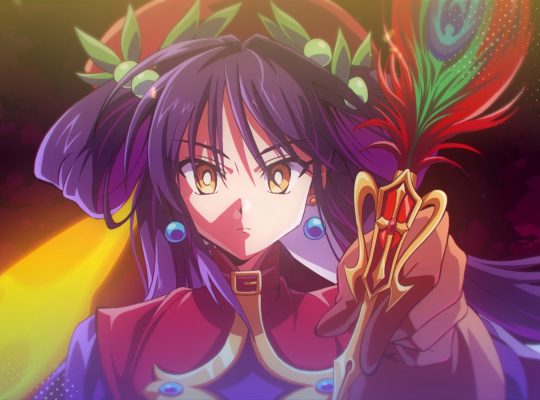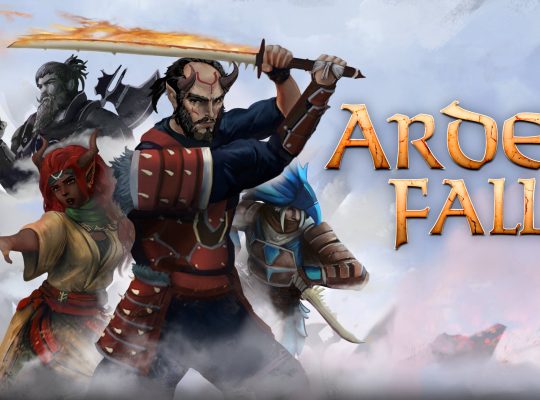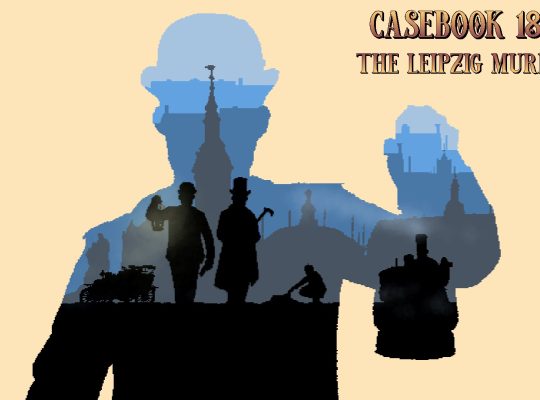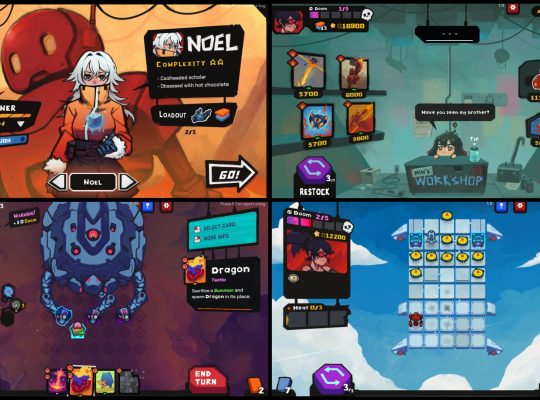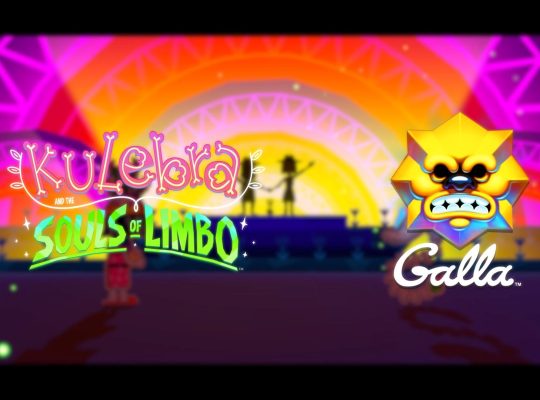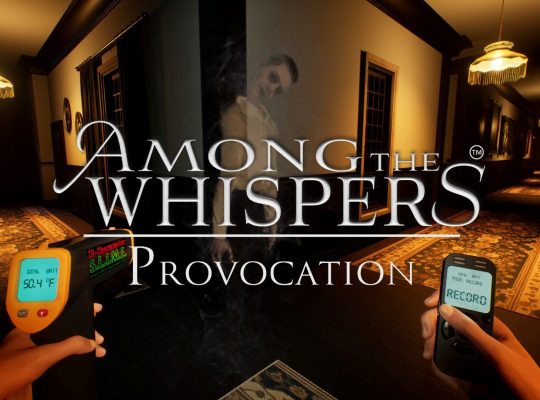Last week, we spoke with Josip Vincetić, a developer from Osijek, via Discord. Alongside his brother Mato, he is developing Dark Queen of Samobor, also known as Crna kraljica, a linear side-scrolling adventure inspired by Croatian mythology and literary works.
We delved deeper into the game’s world, exploring its sources of inspiration, from Croatian mythology to literary works. We discussed the key role of the Croatian Audiovisual Centre (HAVC) in its development, learned what to expect from the game itself, heard about their experiences at Croatian gaming events, and found out which platforms will host this unique creation.
You can find Dark Queen of Samobor on Steam. The Vincetić brothers are also very active on Discord, with the game’s release date set for 2026, while a playtest is expected early next year.
Can you introduce us to the studio’s name, who makes up the team, and how the idea for Black Queen came about?
We chose the name Downtown Game Studio to promote Osijek, specifically Donji Grad, where we’re from. It doesn’t quite make sense since "downtown" usually means a city’s business center, and we live in the suburbs, but it’s Donji Grad, so Downtown it is.
We founded the studio in 2019, and Crna kraljica (Black Queen) isn’t our first game, at least not for consoles and PC. Before that, we spent three years developing hypercasual mobile games. I started the studio with my brother and another programmer, who later left us. That’s when our current programmer, Aleksandar Baranji, joined. Interestingly, while we were working on mobile games, Aleksandar was independently developing his own projects. We met, teamed up, and together released around 30 mobile games.
We always wanted to create a more serious game and hoped to hit it big with at least one mobile title to fund that dream. Though we didn’t achieve that financial breakthrough, collaborating with major mobile game publishers over those years gave us invaluable experience and knowledge.
The idea for Crna kraljica dates back to 2021, when we first submitted it to a HAVC public call. We weren’t accepted then, so we shelved the project and continued with mobile games. The turning point came in 2023 when we resubmitted it to a HAVC call, which was accepted this time, granting us initial funds for pre-production. This encouraged us to fully commit—we ended contracts with mobile publishers and focused entirely on Crna kraljica.
Besides our core trio, we have an incredibly talented concept artist from Zagreb, Fran Domljan, still a student currently interning with us. We hope this grows into a long-term partnership after his internship ends.

How Did You Come Up with the Story?
Inspired by the dark atmosphere of the last-gen console game Inside, we decided to create a similar side-scrolling experience. The opportunity arose with a HAVC contest, prompting us to develop a Croatian fantasy story. Growing up with dark fantasy films like Conan and Disney’s Sleeping Beauty, crafting a story in that vein felt natural. Our initial idea was to focus on characters from Ivana Brlić Mažuranić’s works and build a fantasy world around them. However, after consulting with Daniel Rafaelić, a renowned Croatian film scholar and historian, we were advised to explore less familiar themes. This led us to Šenoa’s “Zmijska kraljica” (The Serpent Queen), a poem about Barbara Celjska, the ruler of Medvedgrad known as the Black Queen.
When Daniel recommended Šenoa’s poem about the Serpent Queen, everything clicked. We realized we could build our own story on those foundations. Šenoa’s epic tells of a crusader who, returning from a campaign, encounters the Black Queen, the ruler of his homeland. A tragic love story unfolds between him, the queen, and his new love, a young girl. Our story diverges significantly from Šenoa’s, but it retains key elements: the queen, the crusader, and the young girl.
Šenoa’s tale served as a springboard for our own vision. However, we didn’t want to limit ourselves to Šenoa alone. Characters, locations, and events are rooted in Croatian mythology and culture, though we don’t strictly adhere to geographical truths. For example, the mountainous part of the game might resemble Velebit, but the characters there draw inspiration from other sources. Our goal is to create a dark fantasy world grounded in Croatian roots, blending elements from various literary works, including some characters from Ivana Brlić Mažuranić’s stories—we haven’t fully abandoned her influence.

Recently, you introduced the character and enemy Grabar, where do you draw inspiration for its look, and how do you come up with ideas for character designs?
We discovered Grabar while researching modern literature on Croatian folk tales and mythologies. Though such literature is scarce here, we strive to find and study available sources. For example, Vida Balog’s Hrvatska bajoslovlja explores ancient beliefs before the arrival of Christianity. In certain parts of Croatia, these beliefs still linger, with older generations passing down stories of ancient beings, as some regions only later fell under Christian influence.
It was through these local testimonies that we learned about Grabara and their nature. Our vision of Grabara is closer to what locals call Vodenjaci. So, we didn’t strictly adhere to historical accuracy but drew inspiration instead. Our Grabara align more with the description of Vodenjaci from those tales, though we also include Vodenjaci in the game, also inspired by these stories.
We work hard to gather as many references from Croatian culture as possible. Daniel has been a great help, providing insights about the Black Queen and the historical context of her life. While we don’t strictly follow historical facts, we aim to weave as many elements from real Croatian medieval history into the game.

How Did the Collaboration with Sandra Lončarić, the Voice of the Black Queen, Begin?
Finding a voice for our Black Queen for the trailer turned out to be surprisingly easy, thanks to Daniel. We had a script ready for the trailer and knew we needed a voice, but we weren’t sure about the scope of collaboration for the whole game, nor how much it would cost or how much text would be involved.
Daniel asked who was providing the voice, and we admitted we didn’t know yet. He then suggested Sandra Lončarić, which seemed unreal to us at the time. The very next day, I spoke with Sandra over the phone and arranged a meeting. She loved the idea. We proposed she not only voice the trailer but also lend her voice to the Black Queen throughout the game, and she agreed.
I think Sandra recognized the potential in our game, and local patriotism likely helped since both she and we are from Osijek. She was immediately thrilled about the project, and we’re honored to work with her. The Black Queen is the main anti-hero in the game, driving the plot and serving as the primary antagonist. The player’s goal is to reach her and confront her, making her an incredibly important character.
What Can We Expect in the Game?
We’ve put special focus on “cinematic” moments, unforgettable scenes, and an engaging story. It’s a linear experience lasting 3-4 hours, meaning you can finish it in one slightly longer play session.
The game is divided into several chapters, each offering a unique atmosphere and a boss fight at the end. Each boss is inspired by characters from Croatian literature or legends. Defeating a boss unlocks a new ability that mirrors the defeated foe’s power. For example, there’s the Plague Witch, inspired by Šenoa’s “Kuginja kuća.” After beating her, she controls time, the player gains the ability to slow down time.
This is one of the first special abilities you’ll unlock, and you’ll need to use it in later chapters to solve puzzles and progress. We place a big emphasis on camera direction. Perspective shifts won’t be random; you can’t freely change the view. Instead, the camera is carefully directed from start to finish, with changes used to highlight elements in the environment or create dramatic effects.
One of our key mechanics is axe-throwing, clearly inspired by God of War. The axe is used in both combat and puzzles. Alongside it, players will gain other special abilities, whose exact designs we’re still developing. Each will be unique and useful when combined with combat and puzzles. You’ll be able to choose which abilities to use in fights. There won’t be heavy RPG elements like skill trees or extensive character development, as the focus is on the linear story. Think of our game as Inside, but instead of a boy, you play as a knight armed with an axe and magic.

You mentioned Neva as an inspiration, will there be seasonal changes?
Our game will use a similar principle of environmental shifts, but instead of seasonal changes, we’ll focus on the time of day. The idea is for the player to journey through an entire day, starting in the morning and ending in the deepest night. This will bring significant environmental changes, as you’ll pass through different biomes, like mountainous and forested areas. In swampy regions, for example, Grabar, monsters lurking beneath the water’s surface, will wait for the right moment to ambush an unwary player.
What other enemies can we expect to encounter during gameplay?
Besides Grabara, we can mention the Red Crows (Order of the Crow), as we’ve named them, ninja-like warriors shown in the trailer. They are one of the Black Queen’s units, tasked with patrolling and guarding a section of the forest the player traverses. Known for using various traps and devices, they avoid direct confrontation, aiming to slow the enemy with obstacles. Of course, they’re also highly skilled in combat. All enemies will have different variants. For instance, within the Red Crows, we have light, heavy, melee, and ranged versions. Additionally, each new biome will introduce new enemy types. While the Red Crows inhabit the forest, the mountainous areas will feature entirely new creatures and beings.

To What Extent Has HAVC Supported This Project?
I often emphasize that without the Croatian Audiovisual Centre (HAVC), our game wouldn’t exist. While the financial support we received from HAVC was crucial for pre-production, its true value lies in something much deeper. Game development is an incredibly expensive process, so the recognition and backing from an institution with such experience and expertise were key. It gave us the real push to start this project. Of course, without the financial help, we couldn’t have begun, but the collaboration with HAVC offers so much more, including promotion and support. We’re truly grateful for everything they do for us.
I’d absolutely recommend that anyone with a development idea give it a try and not let bureaucracy or paperwork scare them off. The application process is actually simpler than it seems. I can confirm that Benjamin Noah Marićak from HAVC is incredibly approachable and ready to assist with everything needed during the application. This kind of support is incredibly valuable for the entire gaming community. The more quality projects we submit to HAVC, the more funding will flow back into the industry.
So, submitting an idea can’t hurt, and you might gain financial support, media exposure, mentorship, and key assistance for developing your own game. Therefore, I strongly encourage everyone to apply.
Are You Considering Launching a Kickstarter Campaign and Looking for a Publisher?
We’re currently preparing for a Kickstarter campaign set to start in early September, mainly to secure funding for further game development. At the same time, we’re actively seeking publishers and are in talks with several. If we secure funding through a publisher, the Kickstarter might not be necessary, but we’re not counting on that.

As a studio, you’ve attended the biggest gaming events in Croatia, what have been some of your experiences?
Participating in festivals like InfoGamer in Zagreb, the region’s largest indie game event, and Reboot Develop Blue in Dubrovnik, one of the world’s biggest gatherings, has proven invaluable for getting feedback on our game. At every conference and festival we attended, we brought a game prototype on a laptop, letting visitors try it out and share their impressions. Getting feedback this early in development is crucial.
For example, we’d arrive in Zagreb with one version, gather feedback, implement it, and then bring an improved version for another round of testing. Through this process, we found numerous bugs and received great suggestions that we added to the game. This is the primary benefit of such events, alongside the added exposure and visibility.
We were also featured on the Best Indie Game channel back in January. We weren’t sure how they found us, but they ranked us 25th on their top 25 list of new side-scrolling games. It was perfect since we were at the start of the video, and on the same day it was released, we gained 500-600 new wishlists from that single video. Recently, we applied again to his showcase, where he personally selects games he likes, and we made the cut. I can confirm firsthand that showcasing on bigger channels is worth it, as it definitely boosts visibility.
Where Will Dark Queen Be Playable? Can We Expect a Demo Version on Steam?
We’re primarily developing the game for PC, but our goal is to release it on all consoles—PlayStation, Xbox, and Switch. Whether we succeed will depend on our financial situation and potential partnerships with publishers who can support us. We think our game would fit perfectly on Switch 2, especially now that it’s out.
We plan to release a demo on Steam next year, closer to the game’s launch. We want to maintain good momentum between the demo and the full release, so it will likely be available during Steam Next Fest, about a year from now.
However, players will get to try the game earlier. This year, we’re planning a closed alpha test with part of the community, followed by a more open beta in the second or third month of next year. Only then, next summer, will the official demo hit Steam.








